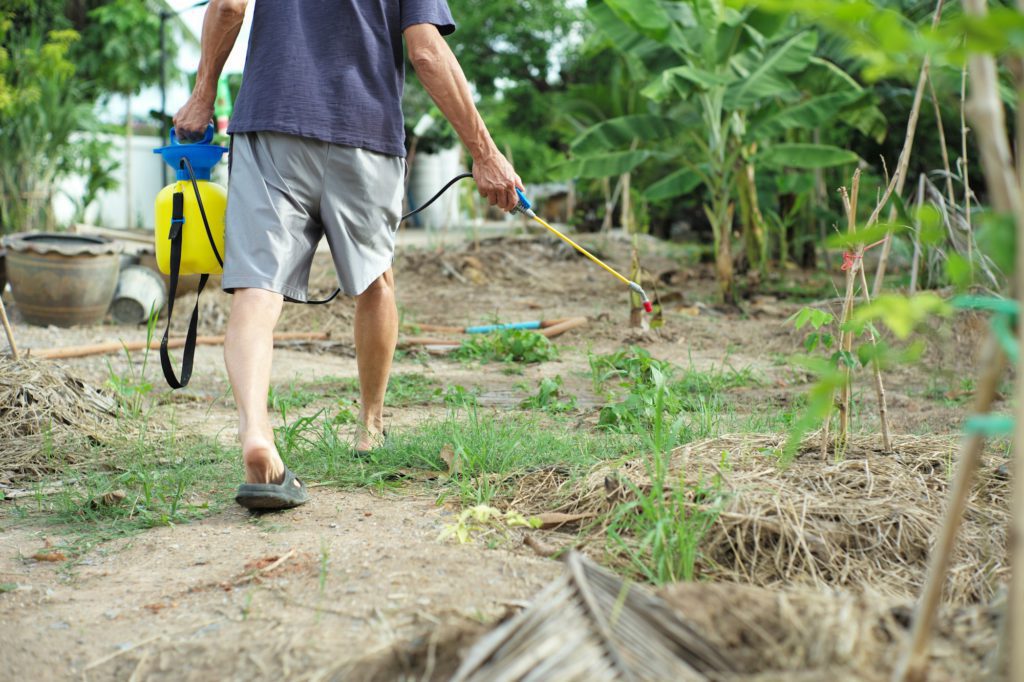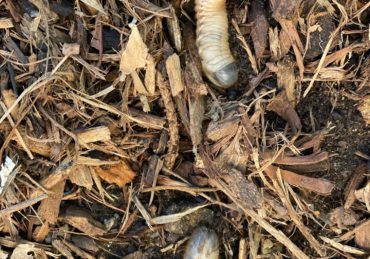5 Ways to Get Rid of Armadillos in Your Yard
Armadillos, while fairly harmless, are known for wreaking havoc in yards and gardens. These armored diggers burrow in the ground, leaving random holes scattered around your yard. Whether you’re dealing with minor disruptions or a full-scale invasion, we’ll guide you through five effective strategies on how to get rid of armadillos from your yard.
What are Armadillos?
Armadillos are small mammals known for their distinctive armor-like shells, which protect them from predators. They’re native to the Americas, particularly in warmer regions and are primarily nocturnal creatures. Armadillos are natural diggers, using their sharp claws to burrow in search of insects, grubs, and other small invertebrates. Their foraging nature can lead to significant damage in lawns and garden, making them a problem for homeowners. Armadillos often dig up grass, plants, and flower beds, leaving behind unsightly holes and disrupting root systems, which can harm the health of your garden. Learn more and get to know the armadillo from the experts at the University of Illinois Urbana-Champaign.

Signs of Armadillo Damage in Your Yard
If you suspect armadillos are causing trouble in your yard, there are several telltale signs to look out for. One of the most noticeable indicators of an armadillo invasion is small to medium-sized holes scattered across your lawn. These holes are created as armadillos dig for insects and grubs. You might also find larger burrows near the base of trees, bushes, or structures, where armadillos create their dens. Additionally, look for disturbed soil, uprooted, plants, or damaged flower beds, as their digging can disrupt root systems and leave plants vulnerable.
Easily hire the best lawn & landscape pros working in your neighborhood.
5 Ways to Get Rid of Armadillos
In this section, we’ll explore five practical and effective methods to get rid of armadillos in your yard. These strategies target the root causes of their presence and provide solutions to keep them at bay. From applying repellents that deter armadillos with scent and taste, to reducing food sources that attract them in the first place, each approach designed to address specific aspects of armadillo behavior. We’ll also cover how to set up live traps for safe removal, eliminate hiding places that offer shelter, and install in-ground fencing to create a physical barrier. By combining these methods, you can effectively protect your yard and maintain a healthy, armadillo-free landscape.
Applying Repellents
Using repellents is a common and humane method to deter armadillos from your yard. These repellents work by targeting the armadillo’s keen sense of smell and taste, making your yard less appealing. Commercial armadillo repellents often contain strong scents like castor oil, garlic, or predator urine, which armadillos find unpleasant. To use repellents effectively, apply them around areas where armadillos are active, such as burrows, garden beds, or the perimeter of your yard.
For best results, reapply the repellent after rain or heavy watering, as moisture can wash it away. You can also try homemade solutions, such as mixing water, hot pepper, and soap as a spray. Keep in mind that repellents are most effective when used in combination with other methods to prevent the armadillos from simply relocating within your yard.
Reducing Food Sources
Reducing food sources is an effective way to discourage armadillos from making your yard their home. These animals primarily dig for insects, grubs and other invertebrates, so by eliminating their food supply, you make your yard less attractive to them. One way to do this is by using lawn treatments that target grubs and insects, such as beneficial nematodes or insecticides. Additionally, maintaining a clean yard by promptly raking up fallen fruit, nuts or seeds that might attract armadillos can help. Keeping your lawn well-maintained and free of excess organic debris can also limit the availability of other food sources.
Setting Live Armadillo Traps
Setting live traps is a highly effective solution to how to get rid of armadillos, allowing you to safely capture and relocate the animal. To set up a live trap properly, choose a medium to large cage trap, as armadillos are about the size of a small dog. Place the trap in areas where you’ve noticed armadillo activity, such as near burrows or along pathways they commonly use. To increase your chances of success, position the trap with the entrance facing a known entry or exit point of the armadillo. Bait the trap with overripe fruit or worms, though baiting isn’t always necessary. Make sure to check the trap frequently, as armadillos are nocturnal and may be caught overnight.
Once trapped, handle the armadillo with care and relocate it at least 5 miles away in a suitable environment to prevent its return. Always check local regulations on trapping and relocating wildlife, and consider combining trapping with other control methods, such as removing hiding places, for long-term results. General guidelines to armadillo trapping can vary state-by-state, so it’s important to check your local guidelines before any actions. General guidelines can be found on Human Wildlife Control Society’s website.

Removing Hiding Places
Removing armadillo hiding places is a crucial step in controlling their infestation and an effective method in how to get rid of armadillos in your yard, as it makes your yard less hospitable to these burrowing creatures. Armadillos seek out sheltered spots for their burrows, such as beneath dense shrubs, wood piles, or structures like decks and sheds. By clearing away brush, trimming back overgrown vegetation, and removing debris like fallen logs or rocks, you reduce the number of potential hiding spots.
Additionally, sealing off access to crawl spaces or gaps under structures also prevents armadillos from digging beneath them. This approach not only disrupts their shelter option but also forces them to look elsewhere for a more suitable habitat. By eliminating these hiding places, you make your yard a less appealing environment.
Easily hire the best lawn & landscape pros working in your neighborhood.
Installing In-Ground Fencing
Installing in-ground fencing is a highly effective long-term solution for getting rid of armadillos and preventing future infestations. Since armadillos are strong diggers, the key to success with fencing is to bury it deep enough to prevent them from burrowing underneath. A sturdy fence made of metal mesh or hardware cloth should be buried at least 12-18 inches deep and extend above the ground by 2-3 feet to deter climbing.
For added protection, angle the buried portion of the fence outward at a 45-degree angle to make it even hard for armadillos to dig under. This creates a physical barrier that armadillos are unlikely to breach, helping protect your lawn and garden from their destructive digging.
How Much Does it Cost to Get Rid of Armadillos?
The cost of getting rid of armadillos can vary depending on the methods you choose. Applying repellents is relatively affordable, with commercial products typically ranging from $15 to $40 per bottle, and homemade solutions costing even less. Reducing food sources may involve purchasing lawn treatments like grub control products, which can cost between $20 and $50 per application, depending on the size of your yard. Setting live traps generally costs between $30 and $100 for a quality trap, plus potential fees for relocating the animal if you hire a professional. Removing hiding place is often the least expensive method, as it primarily involves manual labor and basic yard maintenance tools you may already own. However, if extensive cleanup or professional services are needed, costs can rise.
The most expensive option is installing in-ground fencing. With materials like metal mech or hardware cloth costing between $1 to $3 per linear foot, and professional installation, these combined bring the cost to potentially being several hundred dollars. Combining these methods can lead to a comprehensive solution, with varying costs based on the extent of infestation and your specific yard needs.

What Draws Armadillos to Your Lawn?
Homeowners should be aware that several factors can draw armadillos to their lawn, making it an attractive spot for these digging creatures. Armadillos are primarily attracted to lawns rich in food sources, such as insects, grubs, and worms, which they dig for in the soil. Lawns with a lot of moisture or organic debris, like fallen leaves or rotting vegetation, tend to have more of these food sources, increasing the likelihood of armadillo activity.
Additionally, thick vegetation, piles of wood or rocks, and access to sheltered areas like under decks or sheds provider ideal hiding places and burrowing sites for armadillos. Well-watered gardens and landscape with loose, soft soil are also appealing, as they make digging easier. By understanding what draws armadillos to your lawn, you can take proactive steps to reduce these attractants and minimize the changes of infestation.
Frequently Asked Questions
When it comes to how to get rid of armadillos from your yard, several frequently asked questions arise. One of the first questions to consider is if professional help is required. While DIY methods can be effective, severe infestations may require professional pest control services. Once determining if you can tackle the issue yourself or if professional help is necessary, you can consider other frequently asked questions to help determine the best course of action.
What do Armadillos Hate the Most?
When determining how to get rid of armadillos from your yard, it helps to know what they hate most. Armadillos are highly sensitive to strong odors and tastes, making repellents containing substances like castor oil, garlic, and predator urine particularly effective. These strong scent irritate their sensitive noses and can drive them away. Armadillos also dislike bright lights and loud noises, as they are nocturnal creatures that prefer dark, quite environments.
Additionally, they hate disruptions to their natural habitat, like removing their food sources and hiding places, or making the soil harder to dig. Physical barriers like in-ground fencing, which blocks their digging efforts, are also frustrating armadillos and are highly effective in deterring them from your yard. By targeting these dislikes, you can create an environment that armadillos find unwelcoming and encourage them to move elsewhere.
Easily hire the best lawn & landscape pros working in your neighborhood.
How do you Get Armadillos to Leave?
To get armadillos to leave your yard, you’ll need to make your property as inhospitable as possible for them. Start by applying strong-smelling repellents like castor oil, garlic, or predator urine around the areas they frequent, such as burrows or garden beds. Reducing their food supply is also key. You can use insecticides to eliminate grubs and insects in your soil, which are their primary food sources.
Additionally, remove any potential hiding spots by clearing brush, wood piles, and trimming overgrown vegetation. Setting up live traps can help you capture and safely relocate them. If you have recurring issues, consider installing in-ground fencing around the perimeter of your yard, buried 12-18 inches deep to prevent future digging. For added deterrence, motion activated lights or sprinklers can startle and scare armadillos away.
What is the Best Home Made Armadillo Repellent?
One of the best homemade armadillo repellents is a mixture of castor oil, dish soap, and water; which targets their sensitive sense of smell and make your yard less appealing. To create this repellent, mix two parts castor oil with on part dish soap, and then dilute this mixture with about a gallon of water. You can also add a few crushed garlic cloves or tablespoons of hot pepper for an extra deterrent. Pour the solution into a spray bottle or garden sprayer and apply it generously around areas where you’ve noticed armadillo activity, such as burrows, garden beds, or along the perimeter of your yard.
The strong odor and taste of the mixture will repel armadillos, discouraging them from taking residence in your yard. For best results, reapply the repellent after heavy rain or watering, as the mixture can wash away. This homemade solution is not only effective but also safe for your plants and pets, making it a practical option for keeping armadillos at bay.
Should I Fill an Armadillo Hole?
Filling an armadillo hole can be an effective step in managing their presence, but it’s important to do it correctly to prevent further issues. Before filling the hole, ensure the armadillo has vacated the burrow, as trapping one inside is unpleasant for both you and the armadillo. You can encourage the armadillo to leave by using repellents or gently probing the hole to check if it’s active.
Once you’re certain the hole is empty, fill it with a mixture of soil and gravel, which makes it harder for the armadillo or other animals to reopen. Adding soil along might be insufficient, as it’s easy for armadillos to dig through again. After filling, compact the area to reduce the likelihood of re-digging. It’s also a good idea to address the factors that attracted the armadillo in the first place, such as food sources or shelter, to prevent them from creating new holes elsewhere in your yard.




